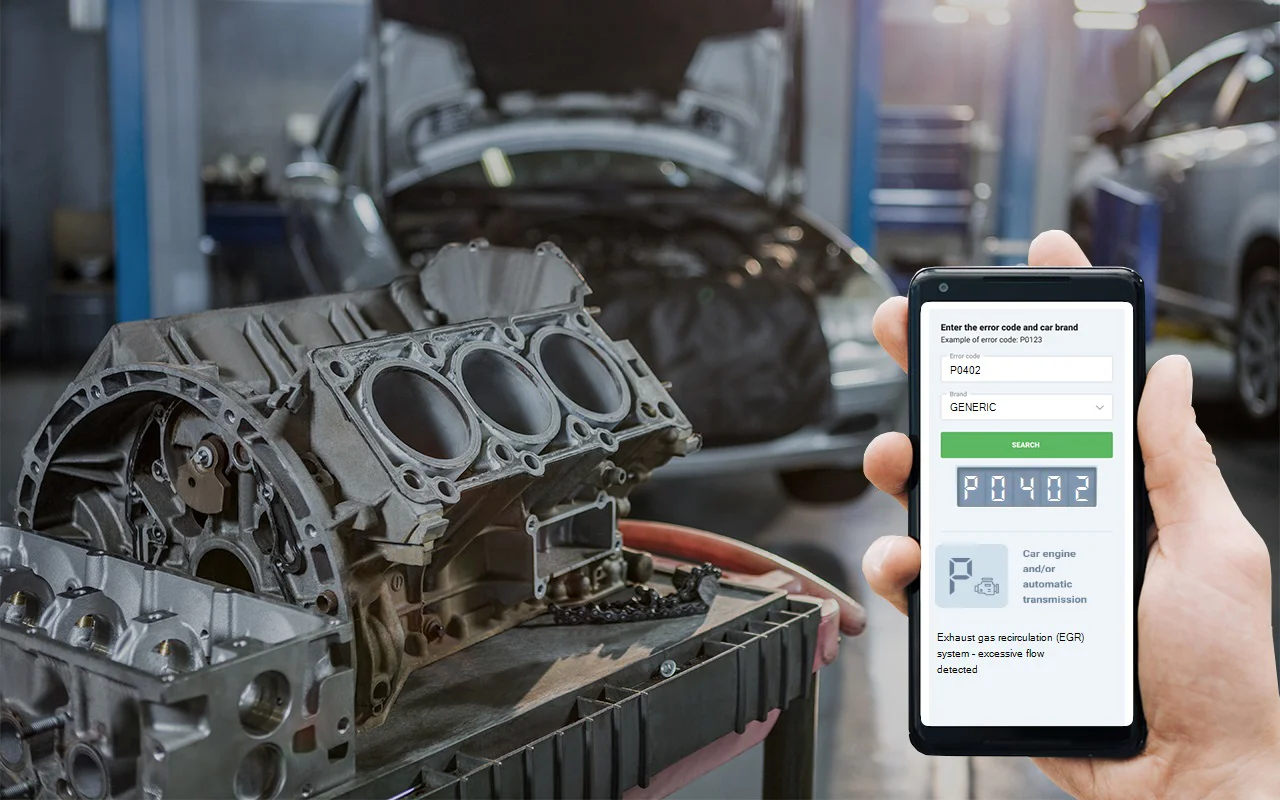Causes of OBD P0402
This fault code is typically caused by one of three main issues:
Firstly, the exhaust gas recirculation (EGR) system’s relative pressure sensor may be faulty and require replacement. In this case, there is actually no performance issue—just a malfunctioning sensor. This is the simplest and most ideal scenario.
Secondly, there could be some form of blockage in the exhaust gas recirculation system. Most likely, this is carbon buildup that occurs over time due to the accumulation of particles, but it could also be caused by another foreign object lodged in this part of the engine.
Lastly, the EGR valve itself may be broken and failing to open due to insufficient vacuum.
Symptoms of P0402 Error
Depending on the underlying issue, you may experience one or more symptoms.
If it is simply a faulty sensor, the only symptom you’ll likely notice is the illumination of the check engine light, indicating a problem with the engine.
However, if the issue is related to engine performance, such as a malfunctioning valve or blockage, you may notice the engine running rough, particularly during acceleration or at high speeds.


Common Mistakes When Dealing with OBD P0402 Code
As with any repair, there are several common mistakes that can make the situation worse.
The first common mistake is replacing the EGR valve without checking the exhaust gas recirculation pressure sensor. If you don’t check the pressure first, you can’t be sure that the valve is actually faulty, which may lead to unnecessary repairs.
Another common mistake is failing to check for carbon buildup before replacing the valve. In this case, you not only waste time and money replacing something that doesn’t need replacing, but the issue will remain even after the repair is completed!
How to Fix the P0402 Code?
Depending on the specific issue, there are several ways to address this code.
It can be resolved by replacing the EGR valve, replacing a faulty catalytic converter, replacing the exhaust gas recirculation backpressure control valve, cleaning carbon buildup, or replacing the temperature sensor control valve in the EGR system.
Conclusion
Overall, the P0402 fault code points to a potential issue with the exhaust gas recirculation (EGR) valve, which could lead to improper engine heating. This may result in increased emissions and reduced vehicle performance. While the article provides helpful troubleshooting tips, it is recommended to consult qualified professionals at an auto repair shop for accurate diagnostics and repairs.
Video for "Error p0402" on YouTube
The following error codes are often searched for
OBD P0402 code analysis and solutions
The page presents a detailed analysis of code P0402 for Opel, Renault, VW (Volkswagen), Ford, Peugeot, Mitsubishi, Skoda, BMW, Citroën, Toyota, Lada, Honda, Kia, and other models to investigate probable causes and solutions related to OBD-II errors, with main attention on the issue. We offer technical documentation and methods for diagnostics to identify and clarify the matter effectively. Our goal is to become a complete resource offering information on issues related to OBD 2 errors and to provide you with the tools needed for successful repair and maintenance of your vehicle. If during the repair of OBD-II errors you need to purchase parts, don’t forget to visit Avtopro!







